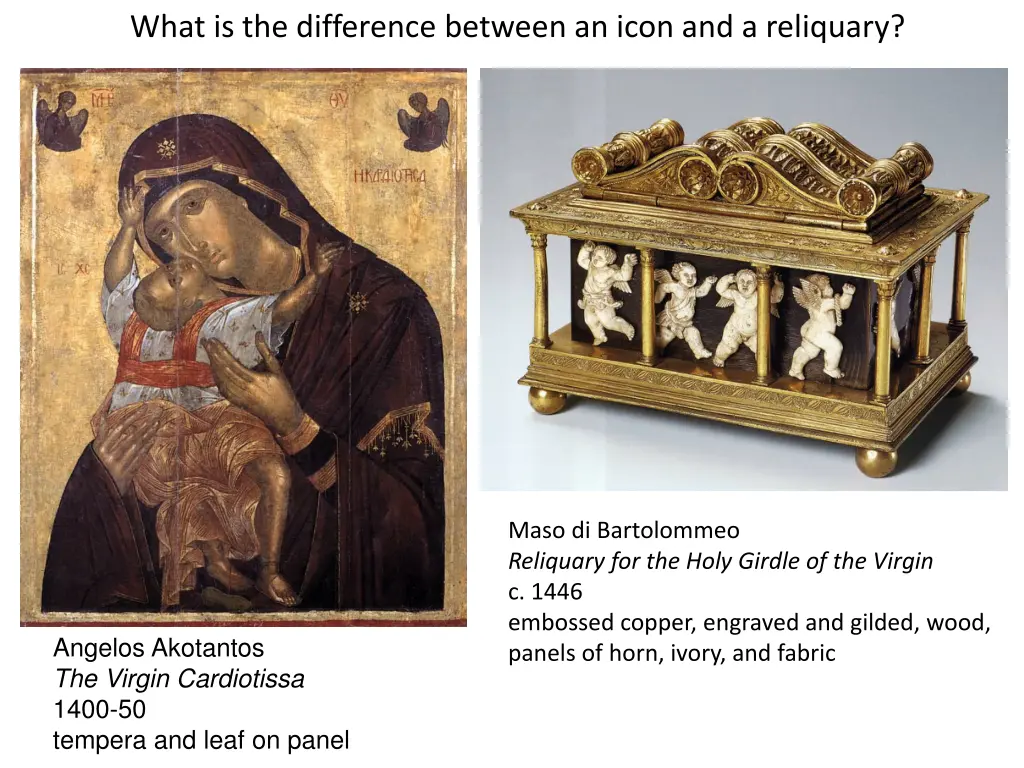
Difference Between Icons and Reliquaries in Medieval Europe
Explore the fascinating contrast between icons and reliquaries from medieval Europe, uncovering their significance, usage, and role in religious practices. Discover how relics were revered and sought after, becoming pivotal in spiritual devotion and pilgrimage.
Download Presentation

Please find below an Image/Link to download the presentation.
The content on the website is provided AS IS for your information and personal use only. It may not be sold, licensed, or shared on other websites without obtaining consent from the author. If you encounter any issues during the download, it is possible that the publisher has removed the file from their server.
You are allowed to download the files provided on this website for personal or commercial use, subject to the condition that they are used lawfully. All files are the property of their respective owners.
The content on the website is provided AS IS for your information and personal use only. It may not be sold, licensed, or shared on other websites without obtaining consent from the author.
E N D
Presentation Transcript
What is the difference between an icon and a reliquary? Maso di Bartolommeo Reliquary for the Holy Girdle of the Virgin c. 1446 embossed copper, engraved and gilded, wood, panels of horn, ivory, and fabric Angelos Akotantos The Virgin Cardiotissa 1400-50 tempera and leaf on panel
Holy Thorn Reliquary British Museum History of the World in 100 Objects: #66 http://www.bbc.co.uk/ahistoryoftheworld/objects/pZ-Jq-iaTOiazy-YLBF2fg
The Crown of Thorns, worn by Jesus when he was mocked and crucified, was one of the great relics of medieval Christianity. It was acquired by Louis IX, king of France, in Constantinople in AD 1239 for the price of 135,000 livres - nearly half the annual expenditure of France. Jean, duc de Berry (1340-1416) commissioned this elaborate reliquary to house just one of the thorns, which is mounted on a large sapphire in the centre.
How were relics used in medieval Europe? Christian relics were usually part of the physical remains of a saint, though they could also be associated objects or clothing. Medieval worshippers would contemplate relics as a means of getting closer to a saint or Christ himself. Relics were also associated with miraculous powers of healing. Pilgrims would travel hundreds of miles to visit important relics in shrines, such as Jerusalem or Canterbury. Trade in holy relics was a huge business in Medieval Europe and kings would assemble large collections and even go to war to secure them
